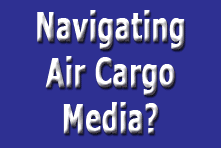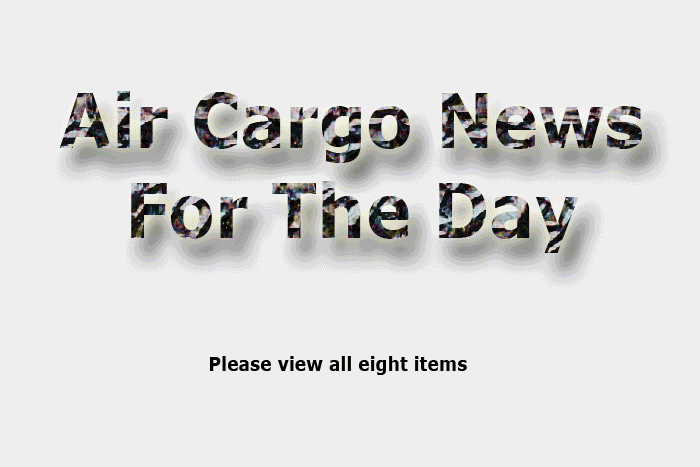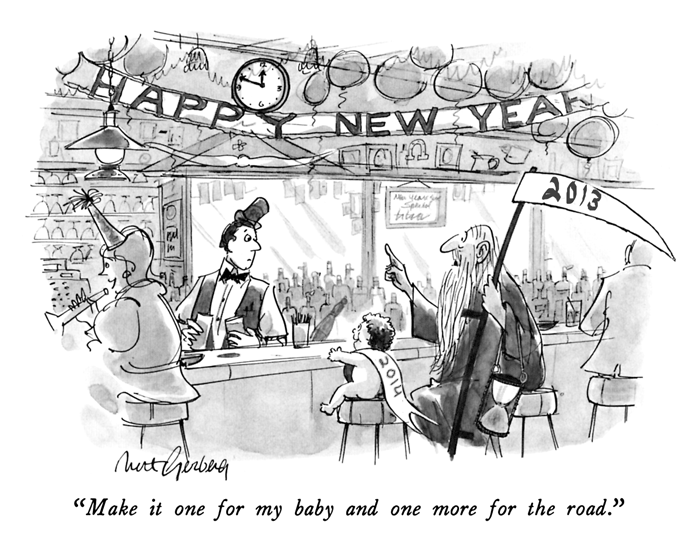
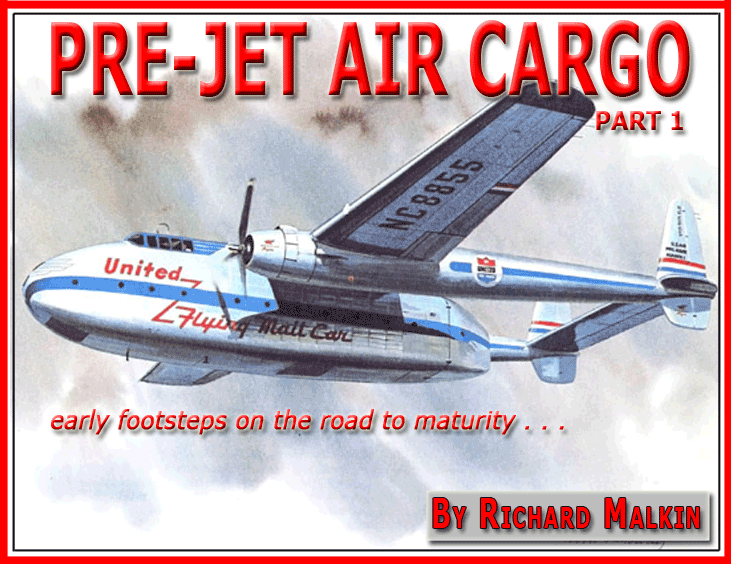
The
USAAF leased a single C-82A to United Airlines Inc.from September 27,
1946 to October 8th, 1946. It was to test the concept behind the 5 cent
airmail stamp where mail could be sorted, processed and bagged while
in flight for immediate delivery after landing, hence speeding delivery
times and reducing costs.
Fairchild performed the interior modifications
to the aircraft which was brand new off the production line in Hagerstown
where it was christened as the Flying Mail Car with civil registration
NC8855.
The cargohold was fitted with everything
required for processing large quantities of mail. Up to six tons of
mail could be carried on a 500 mile route or up to four tons on a 1,200
mile route.
The inaugural flight on October 1, 1946
carried up to 13 personnel and took off from LaGuardia Field, New York
westbound to California along U.S. Air Mail Route No. 1. With onboard
staff sorting the mail along the way, the trip was completed in 12 hours.
Although the concept seemed like a great
idea, it held little practical value and was discontinued after making
only a few trips.
The aircraft was returned to the USAAF
in mid October 1946 for continued military service. It's ultimate fate
is unknown.
 n
my preceding article entitled The
Founding Forties, I devoted the space to a streamlined overview
of the earliest forces that wove the fabric of a brand new industry—air
cargo.
n
my preceding article entitled The
Founding Forties, I devoted the space to a streamlined overview
of the earliest forces that wove the fabric of a brand new industry—air
cargo.
Hard on its heels is this piece, the first in a series of articles that
will encompass the pre-jet era dating from the budding industry’s
beginnings in 1945 to the ensuing decade-and-a-half.
What was the general attitude of the scheduled
airlines toward their cargo business? What were the current conditions
of competition and marketing? Were the IATA-authorized cargo agents
and CAB-authorized air freight forwarders making satisfactory inroads
in cargo sales? How did shippers make creative use of air transport?
What were the challenges encountered by cargo handlers at the airport
and within the aircraft? What were some of the views of air freight’s
analysts?
It is not the intention of this series
to include my personal views on various issues; rather, it will reflect
the views, pro and con and in the middle, from professionals and industry
specialists at that time. Forecasting can be a tricky business.
With the return of peace in 1945, the
two dozen U.S. domestic and international airlines, sensitive to the
surge of the so-called GI air carriers, turned their attention to freight,
as distinct from their express service.
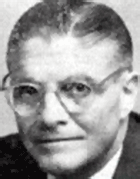 Credit
Air Express International (AEI) for being America’s (and possibly
the world’s) first forwarding company wholly devoted to air transport.
The route to this development revealed a bit of a twist in history:
Opportunity knocked at the door of 24-year old Chester Mayer, (right)
a New York customs broker, when Pan American Airways which handled its
own import clearances, found itself entangled in a serious customs problem.
This led to a decision by Pan Am to farm out its customs clearances
to an independent customs specialist. The offer was made to Mayer, and
almost overnight AEI came into existence in Miami.
Credit
Air Express International (AEI) for being America’s (and possibly
the world’s) first forwarding company wholly devoted to air transport.
The route to this development revealed a bit of a twist in history:
Opportunity knocked at the door of 24-year old Chester Mayer, (right)
a New York customs broker, when Pan American Airways which handled its
own import clearances, found itself entangled in a serious customs problem.
This led to a decision by Pan Am to farm out its customs clearances
to an independent customs specialist. The offer was made to Mayer, and
almost overnight AEI came into existence in Miami.
The time was the nadir of a cheerless
Depression—but the remembered counsel by some old Roman whose
name he could not recall was to “let nothing pass that will advantage
you.” Eventually AEI edged into shipping small packages by air
via airplane, flying boat and even zeppelin. These shipments supplemented
surfaceborne traffic.
All-air was Chester Mayer’s close-held
dream. It was fated to come true.
The war was barely over when Col. L. H.
Brittin, director, Edward S. Evans Transportation Research, proposed
that the CAB “encourage the development” of air cargo by
allowing ICC-authorized consolidators to utilize the services of air
cargo carriers. Col. Brittin’s conclusion was based on interviews
with New York area forwarders who represented about one-third of the
nation’s 100 certificated ICC freight forwarders.
Why did surface forwarders shy away from
air cargo? Among the reasons reported were (a) lack of interest by the
CAB in considering applications by ICC forwarders; (b) lack of understanding
of freight as against small-package express product; (c) the need for
fewer promises and more action; (d) rates are uneconomical.
Meanwhile, in the nation’s capital,
the CAB reported word of IATA’s long-awaited decision on brokerage
rates for interested parties, which must win CAB approval. The rate
of commission in the sale of scheduled international transportation
of air freight and air freightexpress, including extra sections, was
set at 5%; for the carriage in a charter aircraft, not more than 2 1/2%
of the charter rate.
Pleased by the IATA decision on brokerage
rates for forwarders and agents, the Los Angeles Chamber of Commerce
nevertheless took action to set up eastbound transcontinental air freight
activity. It authorized a study of products potentially suitable for
airlift to the East Coast’s principal markets.
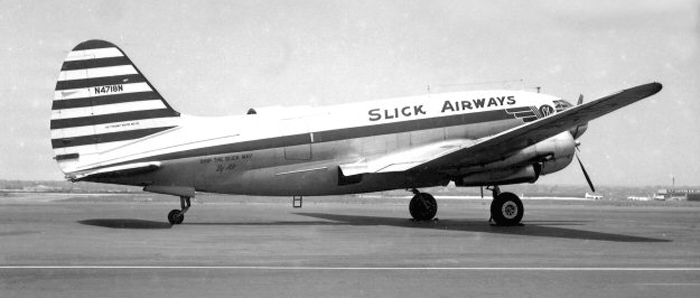 |
Slick
Airways, which cooperated with the Chamber in its study, of potentials,
but speaking independently prior to the project’s completion,
emphasized that hard economics and not the phenomenon of glamorous air
delivery, would provide the answer.
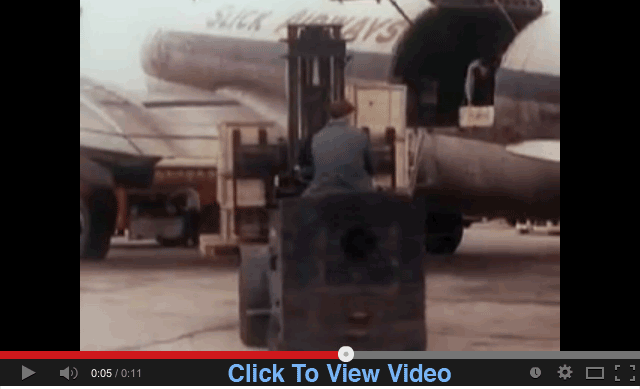 |
Assistant
vice president-sales at the cargo airline, J. Prescott Blount warned
against overblown traffic forecasts, noting that “enthusiasts
outside the air freight business sometimes go overboard in claiming
that this new medium of transportation is about to revolutionize packaging
and marketing in the United States. Nothing could be farther from the
truth.” Airlift, he added, should be seen as a “superspeed
express service”— actually a “tiny fraction”
of the total market (produce).
Irving B. Babcock’s words and tone
were moderate, although they reflected promise. Chairman of Consolidated
Vultee Aircraft Corp., he did not regard air cargo as a substitute for
surface transport. He described air cargo as “a new form of transport
that opens up wholly new possibilities and therefore brings entirely
new meanings into our world.”
It was World War II that brought “the
truth home to us—a preview” of what is starting to take
place. What we learned in the years of armed conflict about air transport
is gradually becoming “the foundation of many routine operations.”
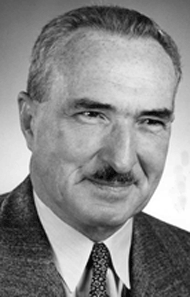 Gen. Harold R. Harris, (left)vice president-general
manager, American Overseas Airlines, set an example for aggressive enthusiasm.
Declaring that what he will say is with “complete conviction and
without any possibility of challenge,” he maintained that any
article that be passed through the aircraft’s doorway either complete
or in sections and not too heavy for the plane’s ability to carry
it, “not only will be, but has been, carried by air under some
circumstance in the world—not as a stunt, but as an economic delivery.”
Gen. Harold R. Harris, (left)vice president-general
manager, American Overseas Airlines, set an example for aggressive enthusiasm.
Declaring that what he will say is with “complete conviction and
without any possibility of challenge,” he maintained that any
article that be passed through the aircraft’s doorway either complete
or in sections and not too heavy for the plane’s ability to carry
it, “not only will be, but has been, carried by air under some
circumstance in the world—not as a stunt, but as an economic delivery.”
What kinds of products was the airline
executive talking about? He ran off a list of commodities: heavy machinery,
sheet metal, barbed wire, window glass—structural articles normally
associated with air cargo. These have been flown at a profit to both
shipper and airplane operator. It is useful to remind the reader that
Gen. Harris delivered his remarks only months after the war.
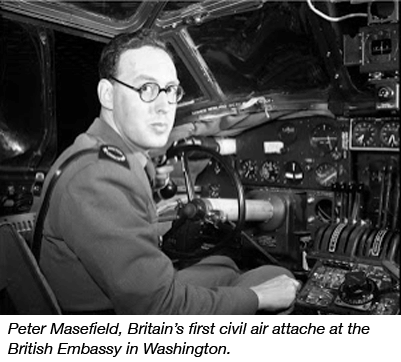 Britain’s former attaché
in Washington, Peter Masefield, (right) took a long look at air cargo,
was impressed by what he saw, and borrowed from Kipling to remark that
we are “at the opening verse of the opening page of a chapter
of endless opportunities.” He suggested that the old expression
“trade follows the flag” is being displaced by “trade
follows the air route.”
Britain’s former attaché
in Washington, Peter Masefield, (right) took a long look at air cargo,
was impressed by what he saw, and borrowed from Kipling to remark that
we are “at the opening verse of the opening page of a chapter
of endless opportunities.” He suggested that the old expression
“trade follows the flag” is being displaced by “trade
follows the air route.”
In a similar vein, but closer to home,
Charles H. Babb, well-known aviation industry executive, saw the immediate
future as a time when, “many long-cherished plans for highway
and rail construction will be abandoned in favor of air transportation.”
Mind you, this was uttered just a few months after the Japanese put
down their arms.
This was a time when an infant air cargo
industry was first getting off the ground. But maritime interests were
already acutely alive to potential competition (although in a few instances
its members publicly derided air cargo’s future impact). A number
of steamship lines filed in Washington for rights in the field of air
transportation.

|
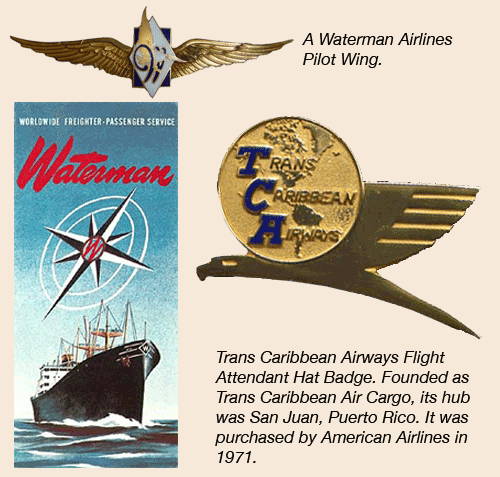 |
A
prime example was Waterman Airlines, a creature of Waterman Steamship
Lines. Its air authority was confined to scheduled service within a
single state in sharp contrast to the seven seas in which the parent
company’s ships sailed. Arguing to break out of its limited air
authority, Waterman sought international routes; it told a resistant
CAB that the American Merchant Marine was “on the very threshold
of world leadership” or against a “hopelessly losing battle
with foreign competitors deep in the use of modern air and sea technology.”
Waterman stressed the high value of sea-air integration for U.S. business.
It held that superior service in international trade is provided when
“ship and plane are under one management.”
 A
sea-air future? The scheduled airlines didn’t see it that way.
The Air Transport Association was in flat opposition to ownership and
operation of planes by steamship companies. The ATA’s general
counsel, Stuart E. Tipton, (right) declared “there always are
those who want to move in on a good thing when the heartbreak of early
experimentation and the years of progress in the developmental stages
have been passed.” He denied that airlines and ship lines are
“parallel modes of transportation.”
A
sea-air future? The scheduled airlines didn’t see it that way.
The Air Transport Association was in flat opposition to ownership and
operation of planes by steamship companies. The ATA’s general
counsel, Stuart E. Tipton, (right) declared “there always are
those who want to move in on a good thing when the heartbreak of early
experimentation and the years of progress in the developmental stages
have been passed.” He denied that airlines and ship lines are
“parallel modes of transportation.”
The air cargo industry is still in swaddling
clothes. But it was already recognized as America’s fastest growing
business. At TWA, R.E. Whitmer, cargo sales head, referred to air freight
activity as a magic carpet to world trade. Modern shippers no longer
thought in terms of distance but in terms of time. He urged creation
of a “common basis for the customs requirements of various countries.”
In support he cited the case of 1,200 copies of forms covering only
200 pounds of freight aboard the flight.
The mouthpiece of the nonscheduled carriers,
the Independent Airfreight Association, waxed enthusiastic over the
rapid growth of its member carriers’ overseas tonnage, which volume
included Puerto Rico and Cuba).
InterAmerican air freight was jumping.
Door-to-door air deliveries to South American cities were 5-7 days as
against seven weeks by surface.
Girding for postwar competition, America’s
domestic and international scheduled airlines, intent on adding clout
to air freight service performance, organized a shippers research unit.
It aimed to serve as “a clearing house for technical information
and to cooperate in the development of regulations for hazardous materials
and packaging methods.
 |
Dr.
John B. Crane, president of Transportation Analysts, Inc. discussing
foreign trade in the postwar era, asserted the importance of separate
treatment of passenger and cargo traffic. He saw all-cargo aircraft
in regular international service by no later than 1955.
How deeply will air freight penetrate
America’s foreign trade? No more than a fraction of 1% by the
mid-Fifties. He suggested that products with a value of 25¢ to
50¢ per pound made excellent candidates for air export.
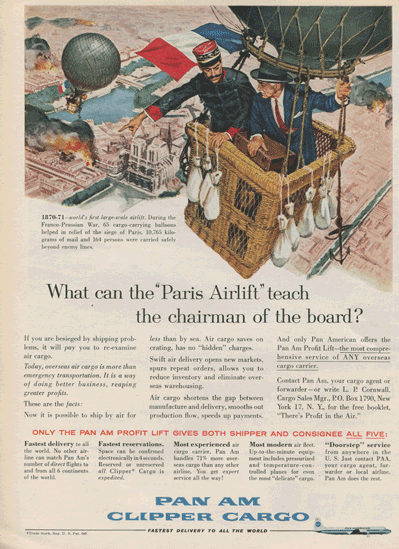 Returning
to the domestic scene, Fairchild Aircraft’s Jerry Martin, a market
analyst, adopted the position that no place exists for both national
and regional air freight carriers in the air freight industry, just
as there is a place for both the certificated carriers and nonscheduled
and contract carriers. The urgent need, however, was for the development
of complete nationwide air freight systems.
Returning
to the domestic scene, Fairchild Aircraft’s Jerry Martin, a market
analyst, adopted the position that no place exists for both national
and regional air freight carriers in the air freight industry, just
as there is a place for both the certificated carriers and nonscheduled
and contract carriers. The urgent need, however, was for the development
of complete nationwide air freight systems.
Pinpointing speed as the “essence
“ of air freight service, Martin held that the sacrifice of speed
is to be avoided as a sacrifice of payload. Each mile saved was of “prime
importance” in air freight system development.
Marketing people and promoters were quick
to turn to the implementation of air cargo to reach their objectives.
In some cases, it was dogged effort to carry out nationwide distribution
of promotion materials in harmony with a tight schedule; on other occasions
it was ordinary products bearing labels which distinguished them as
airborne—snob appeal of sorts.
The Mexico City department store, Salinas
Rocha, received over 90% of the goods on its counters from the United
States and some domestic sources by air freight. The arrangement was
based on an economic decision of smaller purchases and more frequent
reorders.
And there was the DC-3 cargoplane outfitted
as a showroom for products of American manufacturers. The exhibits-laden
aircraft in the service of Trans Caribbean Air Cargo Lines flew to major
cities in South and Central America. Aboard were salesmen fluent in
Spanish and Portuguese.
Trans Caribbean was able to come with
a plane custom tailored to a specific purpose. Fairchild Aircraft was
able to come up with a design for a flying mail transport. This was
the Packet Mailcar. A modified version of the squared Packet freighter
adapted to the requirements of the U.S. Post Office. The Mailcar’s
interior included a sorting table, letter rack, locked drawers for registered
air mail, and bag racks. On nonstop flights, the Mailcar was placed
at six tons; on 200-mile hops, four tons.
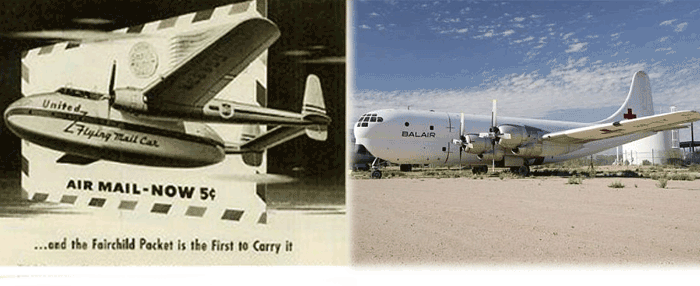 |
The
news from Boeing was spectacularly different: It offered the Stratofreighter,
patterned after the military C-47 and designed for rapid loading.
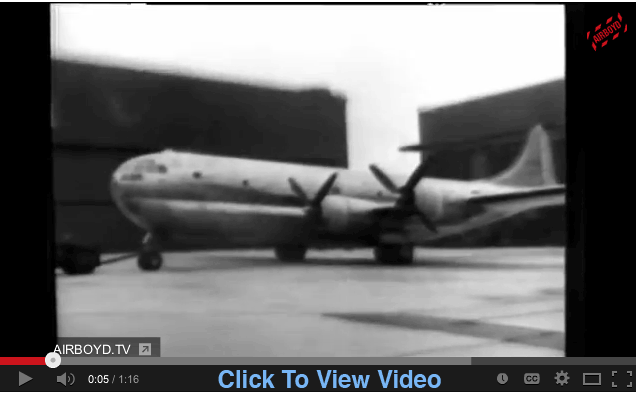 |
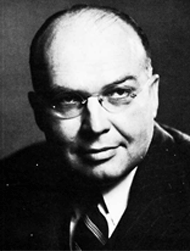 Declaring himself in the corner of gradualism, H. Struve Hensel, Assistant
Secretary of the Navy, argued against hasty government regulation. He
counseled regulators to make certain that regulation was fashioned from
knowledge and not sprung full and panoplied from human brains trying
in vain to predetermine the coming world. In Hensel’s opinion,
“economic regulation will not be possible until either the Civil
Aeronautics Act is amended to include contract carriers or air freight
enters the field of common carriage.”
Declaring himself in the corner of gradualism, H. Struve Hensel, Assistant
Secretary of the Navy, argued against hasty government regulation. He
counseled regulators to make certain that regulation was fashioned from
knowledge and not sprung full and panoplied from human brains trying
in vain to predetermine the coming world. In Hensel’s opinion,
“economic regulation will not be possible until either the Civil
Aeronautics Act is amended to include contract carriers or air freight
enters the field of common carriage.”
In this first of a series of articles
that will take the reader to bowing in of the jet, professional comment
of the future of air freight is largely positive. But there are also
voices that warn that the future, though sought, is not free of intermediate
challenges. It’s like the Chinese proverb that overstatement is
like painting a snake with legs.
However, no matter how you look at it
at this point in air cargo history, the signs have an upward tilt.
Richard Malkin
malkin101@aircargonews.com




